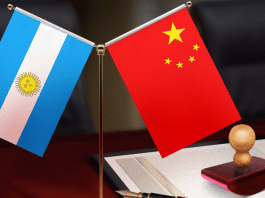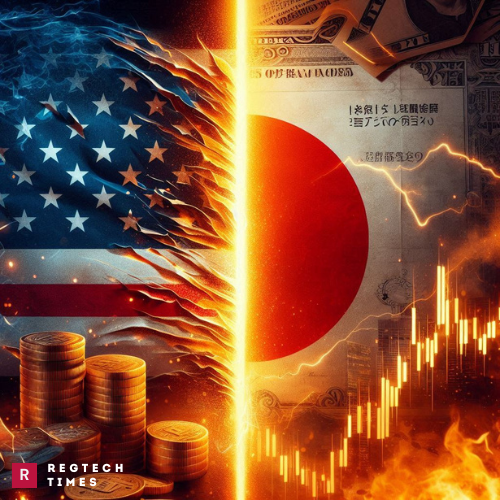This Content Is Only For Subscribers
Hawala is an informal method of transferring money without any physical money moving. The hawala system (also called Hundi or Underground banking). It is one of the important systems that is used to transfer funds from one place to another. Hawala Technique of money laundering is also known as underground banking.
Hawaldars are the persons who make potential use of their contact and as well as help the relatives. This is the unique system of Money Launderers known as the Hawaladars. This type of system is generally used in the Middle East, Africa, etc. The hawala technique is one of the cost-effective systems that is developed. Nowadays Hawala is regarded as the unique parallel economy.
History of Hawala
The Hawala system in money laundering came into existence in the early 8th Century. In earlier days Hawala was one of the important technology of fund transfer that can be transferred through the geographical mode. The hawala became quite refined in the early years.
It was defined as one of the important tools along with the silk road to trade from one country to another. As the 20th century was developing the Hawala system got replaced with the major changes in the banking system offered.
Understanding Hawala Technique
Created centuries ago in India and China, before Western financial systems were established, it was used to facilitate the safe and convenient movement of money. Traders who wished to send funds back to their home country would deposit them with a hawala “banker”.
For a small fee, the banker would arrange for the funds to be made available to another “banker” in another country. The two bankers then settled their accounts, usually once a year. The two bankers are also involved in the illegal money laundering process as a whole.
The process is still popular today with immigrant populations or seasonal workers who want to (legally in this case) send small sums to their home country. The system is considered to be unique and different from modern banking conditions. It is generally initiated through the honor system.
The different aspects can be taken into account regarding the oral and written record the promissory notes that are developed are never been exchanged by the Hawaldars in any case. The dealer keeps the documentation of the credit and debit notes that are received from the customers. He tries to settle them in the form of cash transactions, property distribution, etc.
How does the Hawala technique work?
The Hawala system is initiated as it is workable independently. The legal or the judicial system is not involved in it. At the time of operating the Hawala system, there is not a written contract or an agreement initiated. Hawala remittance systems involve the transfer of the value of the currency without physically moving it.
The Hawala broker in the recipient city/country contacts the beneficiary and delivers the funds. The recipient can receive the funds without producing identity documents other than the previously agreed code.
Hawala’s crucial role
While entering into the Hawala transaction there is actually no initiation of physical form cash. There is one Hawala broker appointed he looks after the transaction that is taking place. This person plays a major role while initiating the transactions. The system is incorporated on trust between each other. One of the important work that the broker has to do is to document the transaction in an informal journal or the book that is developed for entering all the transactions. The Hawala brokers are not licensed.

Relation between Hawala and Money Laundering
Underground banking plays a vital role in transactions. Hawala is regarded as one of the important forms of underground banking. The money launderers use this technique to launder money from one country to another that including the geographical zones as a whole.
Does everyone think that how can the system be used in the money laundering process? As it has seen a lot of scarcity of the bureaucracy in the system as they are not vanquished through the formal banking system that takes place. There are no government regulations developed according to the official bodies.
It provides anonymity in its transactions, as the source of money being transferred cannot be traced, and there are relatively few written and official records.
Hawala technique and abuse
Hawala technique generates the lawful purposes to migrate workers. This system makes it susceptible for the launderers to launder illicit money through money laundering. As they are anonymous and require minimal documentation, external oversight of the transactions is limited and detection risks are minimized. It is regarded as susceptible to abuse by individuals and groups that were used to transfer illicit funds for starting the illegal activities as a whole.
Lack of Evidence
The lack of evidence plays a major role in understanding the relationship between the system and money laundering. The irregular and illicit flow of money are difficult transactions to track. This is because criminals are imbibing the new methods to avoid the detection of money laundering that is taking place. The empirical evidence that is developed works to some extent. After that it’s non-existent.
Why do Users Prefer Hawala?
In spite of the fact that hawala transactions are illegal, people use this method because of the following reasons:
- The commission rates for transferring money through hawala are quite low.
- No requirement of any id proof and disclosure of the source of income is there.
- It has emerged as a reliable and efficient system of remittance.
- As there is no physical movement of cash, hawala operators provide better exchange rates as compared to the official exchange rates.
- It is a simple and hassle-free process when compared to the extensive documentation being done by the banks.
- It is the only way to transfer unaccounted income.
Impact of Hawala on India
The system that is developed is due to the illegal activities that are taking place in India at Large. In India, black money is generally earned through deregulated transactions. Because of that corruption is rising in India. As the system allows to flow the of black money in and out of India. It is mostly used to pay bribes.
Reasons for Hawala
The main reasons for using the hawala technique of money laundering are:
- Low bank charges
- The speed of the exchanges
- Difficulties to open a “normal” bank account
- A lack of confidence in the traditional banking system
With the proliferation of anti-money laundering measures around the world, the hawala technique has, unfortunately, become more attractive to money launderers and terrorists. The main advantage for them is that there is almost no administrative trace.
Money transfers are made by coded messages, increasingly using encrypted messaging. It is a particularly effective way to complete the first step of the money laundering cycle, the placement (of cash).
Conclusion
In India recently the Hawala technique goes parallelly in the illicit money laundering exchanges that are taking place. The currency is transferred from one country to another that does not include Central Bank as the mediator. It affected the common man at large. Because the common doesn’t deal with the high exchange rate.
The common man doesn’t get access to any bank accounts. It consists of illegal transactions that are taking place. The exchange of Foreign currency is done under the guidance of the authorized dealer. Because of that, the Hawala transactions are considered an illegal transaction under the FEMA Act.
The Hawala transaction that is taking place is because of the increase in the black money market. It impacts the overall growth of the country as a whole.
Even with modern AML tools, the system is still thriving today with annual volumes in the billions of dollars, perhaps even tens of billions. Moreover, the Government has taken an effective initiative to penalize and put an end to the Hawala transaction that has taken place. But it is in existence as huge amounts are involved.




